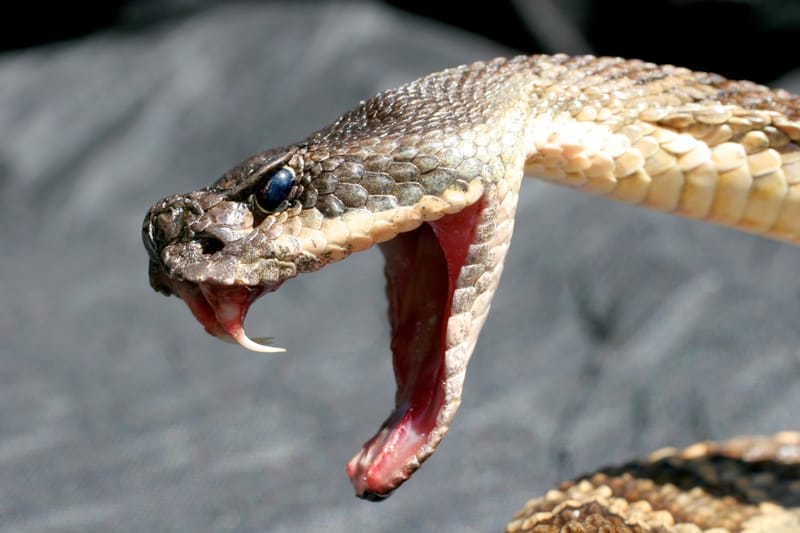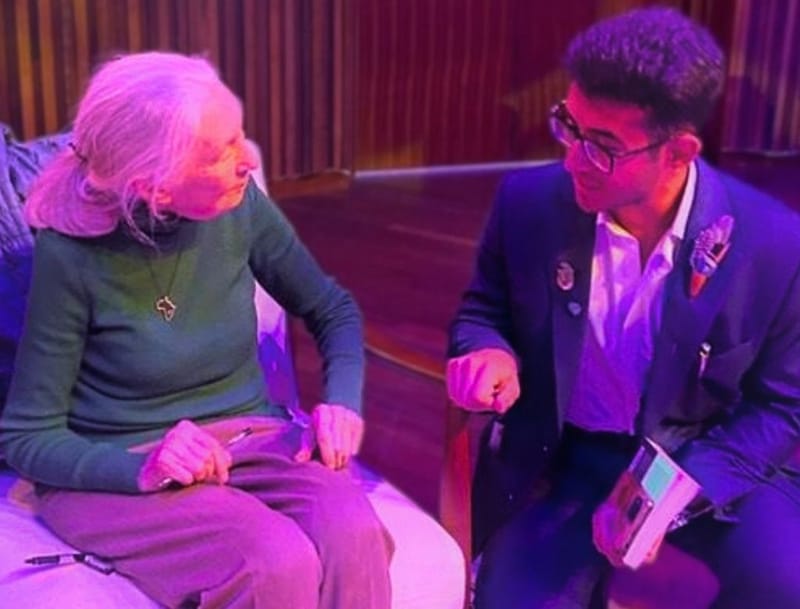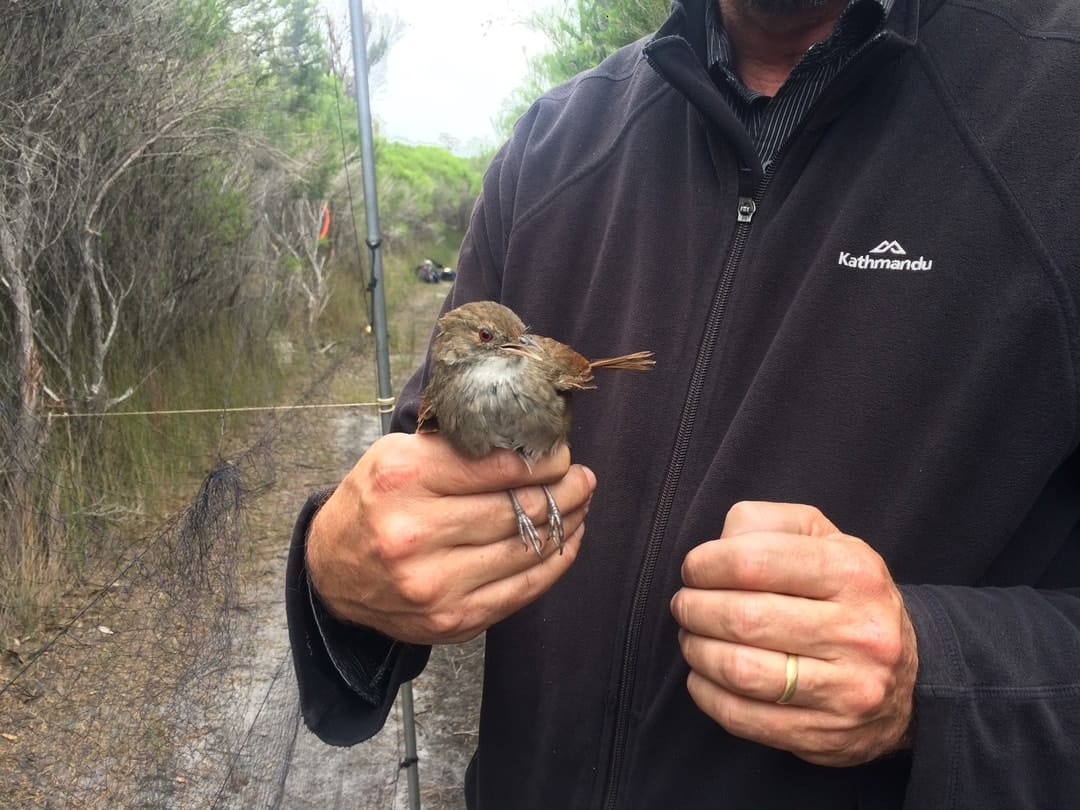
In early February, Monash ecologist Rohan Clarke took part in a rescue operation to save the endangered eastern bristlebird ahead of the fire front burning near Mallacoota in Victoria.
It's thought that 160 bristlebirds live on and around Howe Flat, just north of the remote coastal town near the NSW border.
“The bird is nationally endangered,” Dr Clarke explains. “There's only three populations left in the country. One is on the Queensland-NSW border, and that's fewer than 20 birds.
“The second is in the Wollongong, Jervis Bay area – that's our largest population. And then the third is all the way down in Nadgee, on the NSW side of the border, and Howe Flat on the Victoria side of the border.”
"I thought the bristlebird was gone."
Mallacoota was ravaged by fire on New Year’s Eve. The fire continued to burn the next day and joined “the Snowy Complex fire, up into NSW,” Dr Clarke says.
While the fire burned through January, Dr Clarke joined members of Zoos Victoria and the Victorian Department of Environment, Land, Water and Planning, concerned about the survival of rare species in fire-affected regions.
Howe Flat is “one of the most biologically diverse places in Victoria”, he says. It's also home to the diamond python and the eastern ground parrot – “but the bristlebird was at the top of the pile as the most threatened”.
On the last two days of January, gusty northerly winds fanned the fire front.
“I thought the bristlebird was gone,” Dr Clarke says. “The decision was made that if Howe Flat hadn't been burnt out by Saturday [1 February], which was a real possibility, then we would deploy as soon as it was safe to do so.

“The goal was to get enough birds into captivity so that if the worst happened and we lost all of Nadgee and all of Howe Flat, we could either reseed a new southern population, or we would at least have a population in captivity to allow us to do something later.”
On Monday, 3 February, he joined a team of seven at Essendon Airport and boarded a Chinook helicopter on deployment from Singapore during the fire emergency. With him was Dr Rowan Mott, also from Monash, representatives from Zoos Victoria, DELWP, and interstate bristlebird specialists.
Dr Clarke heads the Monash Ornithology and Conservation Management Group, and has studied the bristlebird. But he says a key reason he was on the team was because he is a “gun catcher”.
“I’ve caught lots of birds, and done it very quickly, with lots of tricks to make that work,” he said.
The helicopter flew to Sale, Mallacoota and then Marshmead, the Methodist Ladies College residential campus on the Mallacoota Inlet. The fires were only a kilometre away.
“You could constantly smell smoke. You could always see the smoke plume,” Dr Clarke says.
Howe Flat was 25 minutes away by four-wheel-drive.
The team received a fire ground briefing, then did a quick reconnaissance of the places they planned to set the nets early the next morning. The southern population of bristlebirds live in “thick, swampy sedge – tall, stiff grassland – with an overstorey of melaleuca,” Dr Clarke says.
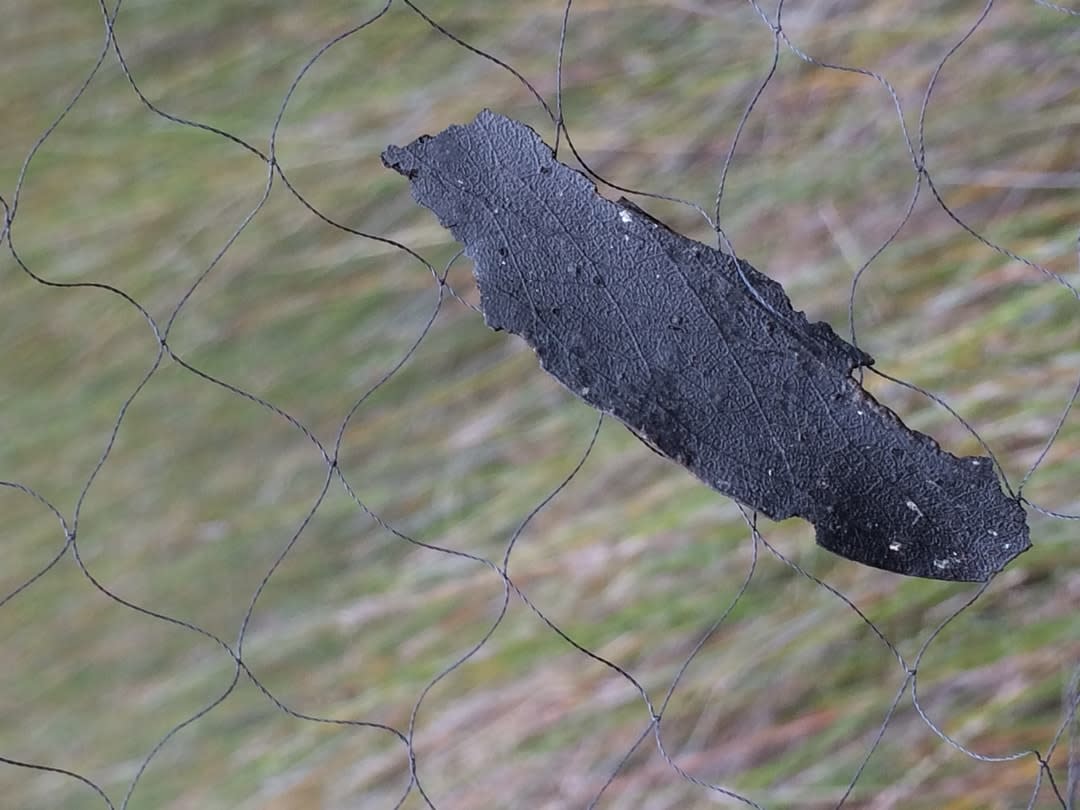
In the half-light of Tuesday morning, super-fine cotton nets were set in place to trap the birds.
“Typically, you only operate one or two nets,” Dr Clarke says. “Usually you try and set them strategically between two shrubs, where you think a bird is most likely to try and move from one place to another. The net is divided into three or four shelves, and each shelf has a pocket along the full length. When a bird hits the net, it naturally falls a little, and it drops into that pocket.”
Recordings of the bristlebird call were played “to get the birds in”, he says. “We use Bluetooth so we're not going near them. We try and position the speakers and the calls to attract them to one side of the net. And once we're happy with where they are, we then play them through to the other side so they jump into the net.”
Their first pair was caught within “10, 15 minutes”, he says. Dr Clarke says the birds are territorial, so he and Dr Mott moved 100 metre away to another site. “We moved the nets, I think, five times on the first morning.” The Monash team caught seven birds that day.
“We had to be finished by 11 because we needed to get the birds on to a boat that was waiting for us from Fisheries,” he says. From Marshmead jetty, the boat went down the inlet to Mallacoota. “And then a charter aircraft came in to pick the birds up – nine were caught in total on Tuesday – and fly them back to the Melbourne Zoo.”
“We're down to a situation where a single fire event could remove an entire population.”
He says the team had hoped to stay for five days and to catch up to 20 birds, with newly captured birds transported to Melbourne daily. On Wednesday morning, six more were trapped, bringing the total to 15 – or 10 per cent of the Victorian bristlebird population. “On the second day, ash was falling,” Dr Clarke recalls. “We've got photos of blackened eucalypt leaves in the mist nets.”
At a planning meeting at Marshmead that afternoon, the team was discussing setting nets at a new site later that day, but “then we got word that we were being evacuated”.
He's been monitoring fire activity in the area since leaving the site. The remaining eastern bristlebirds in the Victorian population are still safe, he says, but the fire season isn't over.
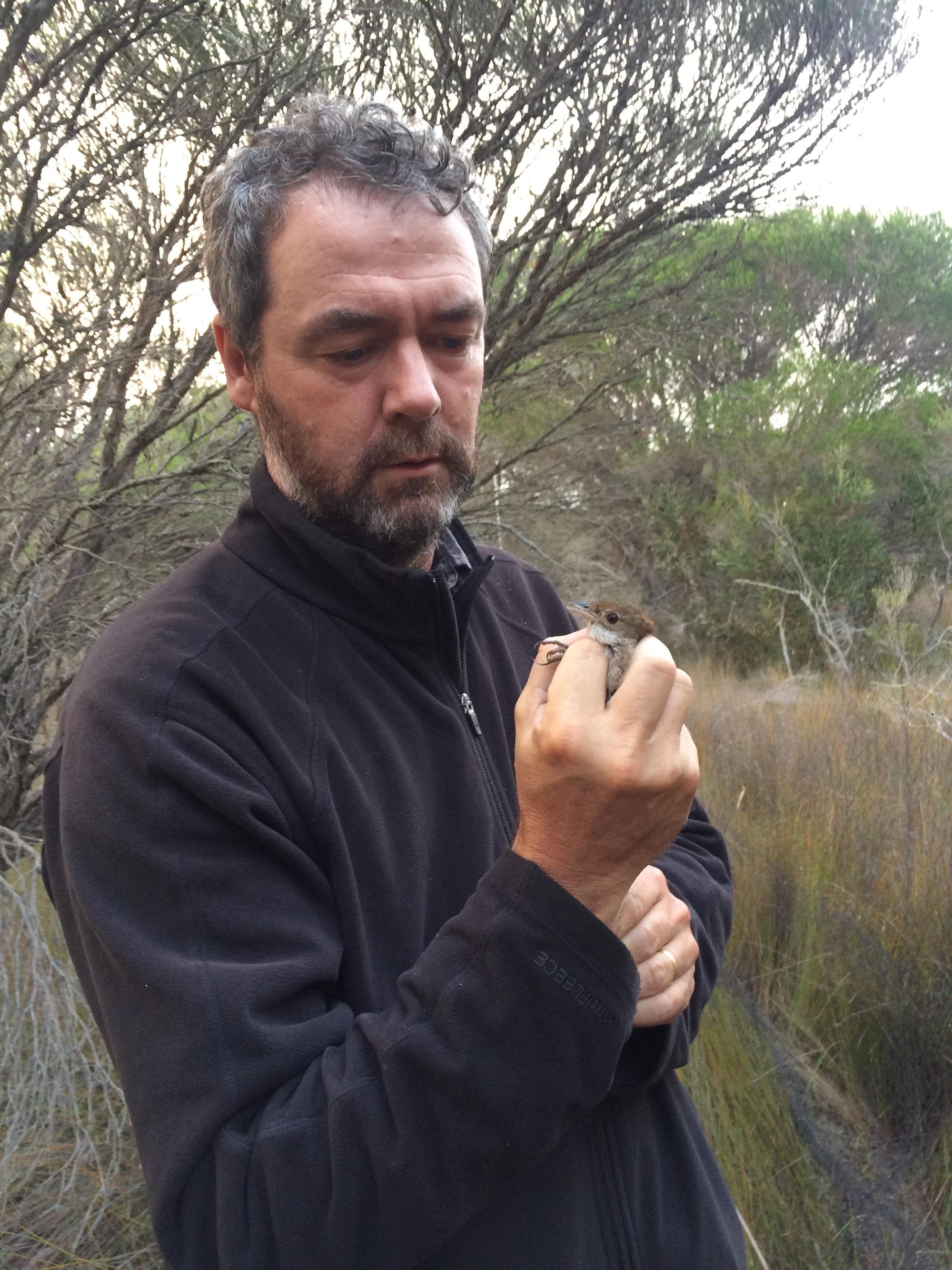
“The best-case scenario is that Howe Flat doesn't burn, and then the plan would be to put the birds back. If it does burn, then we've essentially got these rescued individuals that provide options for captive breeding or release at a new site,” he says.
Bristlebirds have declined to the point that they're now endangered because they live in fire-prone heath, he says. Over the years, much of their traditional habitat has been taken over by urban developments and agriculture, so they have fewer places to go when fire arrives.
“We're down to a situation where a single fire event could remove an entire population,” Dr Clarke says.
Habitat hope
Many birds and animals have lost their homes – and lives – this summer. When he passed through Mallacoota, he saw lyrebirds seeking refuge in the town. He also saw isolated pockets of untouched bush along the coast, where he hopes some species will be able to survive.
“For some of the most fire-sensitive habitats, I think it's reasonable to say that it won't go back to what it was within our lifetime,” he says. “It'll be something different, which might mean a complete shift in terms of habitat type. Or if that habitat does return, it may take 100 years or more. For example, you don't just get cool, temperate rainforest growing back quickly after a fire.”
He describes the bristlebird mission as a “wow event within a career”.
“Flying into the fire ground and rescuing an endangered species ticks a lot of boxes that I hope will never be ticked again.”



